Iowa City is only about 15 miles west of West Branch and is the home of the University of Iowa. We stayed in a hotel there overnight and headed for Oakland Cemetery the next morning.
According to its website, Oakland Cemetery was deeded to the people of Iowa City by the Iowa territorial legislature on Feb. 13, 1843. The original plot was one block square. The cemetery now encompasses 40 acres. Oakland Cemetery is a non-perpetual care cemetery supported by city taxes. The staff is committed to the maintenance and preservation of privately-owned lots and accessories. It is still an active cemetery and you can purchase a plot there if you so desire.
According to Find a Grave, Oakland Cemetery has around 16,000 graves recorded there. However, I’m sure there are more than that.
Teresa Karasek Dolezal Pica Feldervert
Most people visit Oakland Cemetery for one reason and that’s to see the Black Angel. This is the second Black Angel I’ve encountered in Iowa. The first was the statue in memory of Ruth Anne Dodge by sculptor Daniel Chester French that’s adjacent to Fairview Cemetery in Council Bluffs, Iowa. I wrote about that one in 2017.
The story surrounding Iowa City’s Black Angel is a bit sketchy in places and some of the specifics are unknown. But when it comes to a haunted statue, that’s kind of the norm. Right?
We do know that Terezie “Teresa” Karasek was born around 1836 in Czechoslovakia (then known as Bohemia). It was only after her death that it was discovered that she’d studied at the University of Vienna, earning the equivalent of a degree in gynecology and becoming a midwife. She reportedly delivered more than 100 babies.
Her son, Eduard, or “Eddie”, was born in 1873. He was her son by Dr. Frantizek Dolezal, whom she married in 1865. She arrived with Eddie in Iowa City sometime around 1877. I’m not sure what became of Dr. Dolezal.
Eddie died in 1891 at age 17 of meningitis. He was buried in a crypt in a different plot in the cemetery than where he is now and a tree-shaped monument was erected in his honor. His body (and the tree marker) were later moved to the site of the Black Angel monument around 1913.
Overwhelmed with grief, Teresa moved to Chicago then to Minnesota where she married Joseph Pica. She would divorce him and move to Eugene, Ore. where she met and married wealthy ranch owner Nicholas Feldevert in 1897. He was of German heritage.
At the base of the monument, you can see the words “Rodina Feldevertova”. The word “rodina” means “family” in Czech. Both Teresa and Nicholas shortened it to Feldevert at some point.
When Nicholas died in 1911, he left Teresa a wealthy widow. Much of the money went to fund projects back in her hometown of Strmilov in Czechoslovakia.
But Teresa also wanted to honor her third husband and son, so she began making plans to commission a statue that would eventually be placed by their graves at Oakland. It would eventually be her final resting place as well.
Mario Korbel
On the advice of friends, Teresa contacted up and coming Czech sculptor Mario Korbel in Chicago to create a statue. She also wanted him to incorporate Eddie’s tree monument into his design. His model in clay at the Art Institute of Chicago caused a stir and Teresa gave him the green light to cast it in bronze. In July 1911, he stopped in Iowa City on his way west to check the site where it would eventually be placed.
While waiting for Korbel to finish, Teresa had Nicholas’ remains disinterred in February 1912 and sent to Portland, Ore. to be cremated before having them sent on to Oakland Cemetery in Iowa.
Korbel’s eight and a half foot statue arrived in Iowa City in November 1912. Unfortunately, Teresa didn’t like what she saw and refused to pay Korbel for his hard work. He hadn’t incorporated Eddie’s tree monument as she had requested. She also did not like the dark patina on the bronze at all.
A lawsuit ensued and Teresa ended up paying for it after all. The statue was placed on its four-foot tall base. An inscription in Czech is on the side of it.
The inscription translated reads:
The sun and clouds stood above my journey/There were tough and joyful days in my life./ You did my work just to make the world better./ You fold your hands and your head goes down./ Your spirit flies away where everlasting reward/ Is waiting for you after hardship.
Teresa died on Nov. 18, 1924 in Iowa City. Her remains were cremated in Davenport, Iowa, and her ashes were buried with her husband and son beside the Black Angel. She was 88 and had little money left. Her death year was never carved into the base because there was nobody left in her family to pay for it.
The Black Angel only darkened more over the years, causing people to talk. But according to an NPR article bout the statue that I found, that’s not unusual:
Bronze is an alloy made up of copper and zinc and sometimes even other metals like aluminum, manganese, nickel or zinc. So that metal combination can change the color. Also chemical combination called a patina is added to the surface of Bronze sculptures and that can create some interesting color changes.
Paul Benson is an art conservator for the Nelson Atkins Museum of Art and he also says the environment can play a big role.
“Put a sculpture out in Kansas City, put another one out in New York City they may turn completely different colors,” says Benson.
The Myths of the Black Angel
There are quite a few myths and stories surrounding the Black Angel. Many students and other Iowa City residents visit the statue, along with interested travelers like me.
The biggest night of attraction is on Halloween where visitors gather around the statue, and some test their luck by touching or kissing the statue. It’s said that if someone touches or kisses the statue they will be struck dead unless that person is a virgin.
It is also rumored that if a pregnant woman walks beneath the statue’s stretched wings that she will miscarry. Some have seen mysterious ghostly figures walking nearby. It goes on from there.
The Black Angel has been vandalized several times over the years. Her outstretched fingers have been damaged. Paint has been applied many times. It’s rather amazing that she is still intact after all these years.
The Black Angel appears in W.P. Kinsella’s 1986 novel “The Iowa Baseball Confederacy” in which the statue plays right field for the Confederacy. She also makes an appearance in Andrea Lawlor’s 2017 novel “Paul Takes the Form of a Mortal Girl,” in which the titular Paul seduces a graduate student under its wings. Footage of the Black Angel is included in the music video for “Alive Twice” by the band Friendship.
More recently, a new restaurant called The Black Angel opened in Iowa City in August 2023.
The NPR article said Oakland’s grounds keeper Russell Buffington noted that people leave money and flowers for the angel. He’s found bottles of liquor given as offerings, and a lot of people have been married in front of it.
Teresa’s Legacy
In the end, the ghost stories aren’t what really matter. It’s always been about one woman’s wish to keep the memories of her beloved son and her husband alive.
Author Tim Parrot wrote a book called “The Black Angel A Centennial History 1913 – 2013”. He said Teresa didn’t care about the whispers about the statue, according to interviews with her that he’s read.
“Her concern wasn’t for the Black Angel. It wasn’t about anything except her son and her last husband. She seemed very concerned about people knowing who they were.”
I’ll be back next week with more stories from Oakland Cemetery.



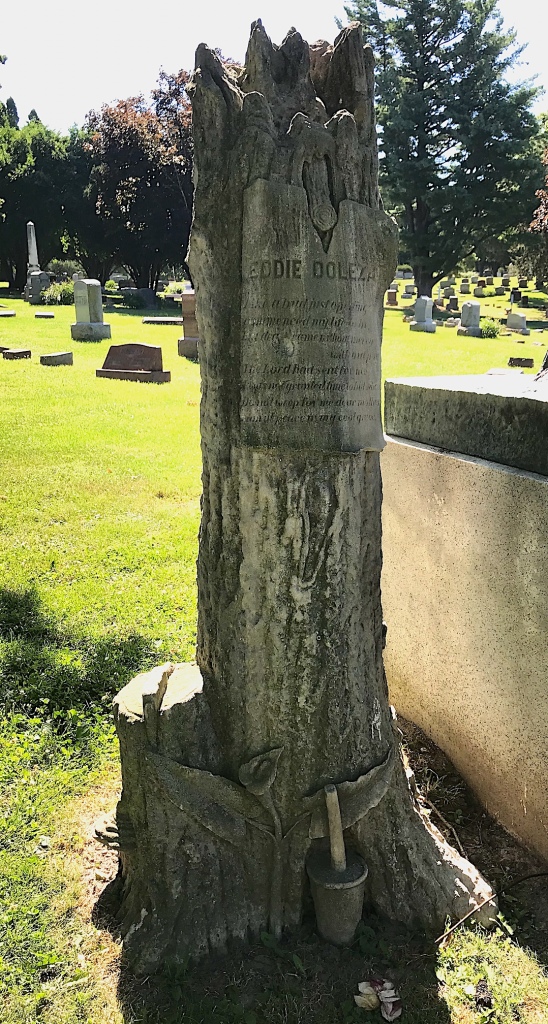
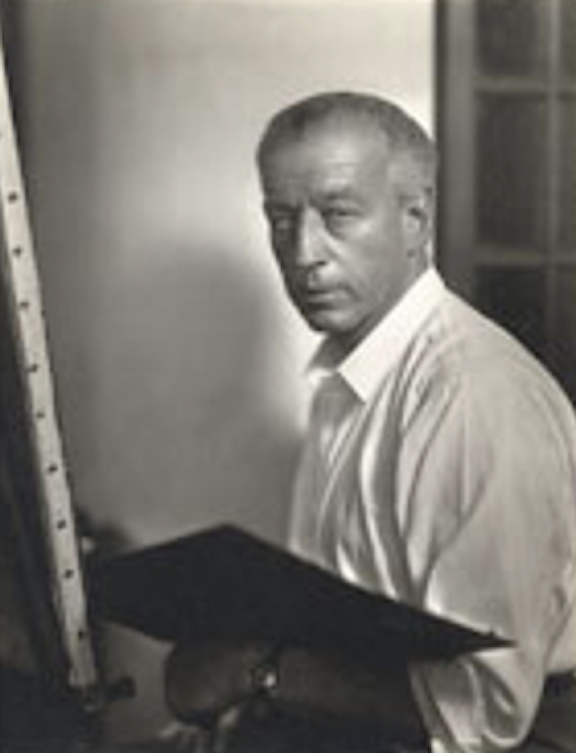
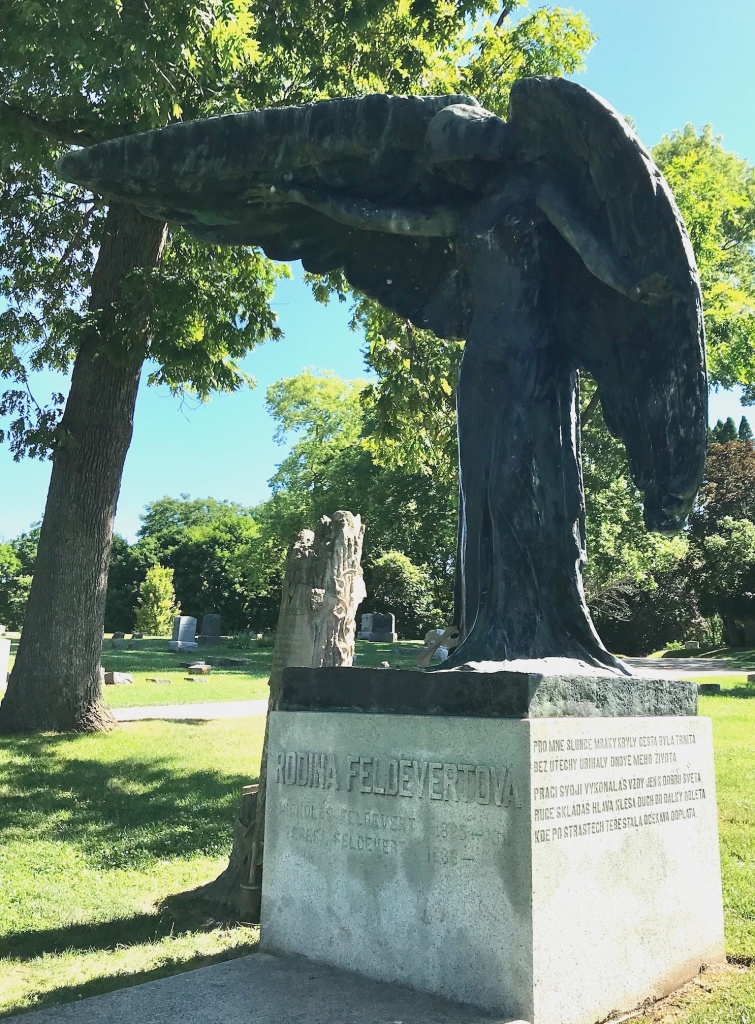

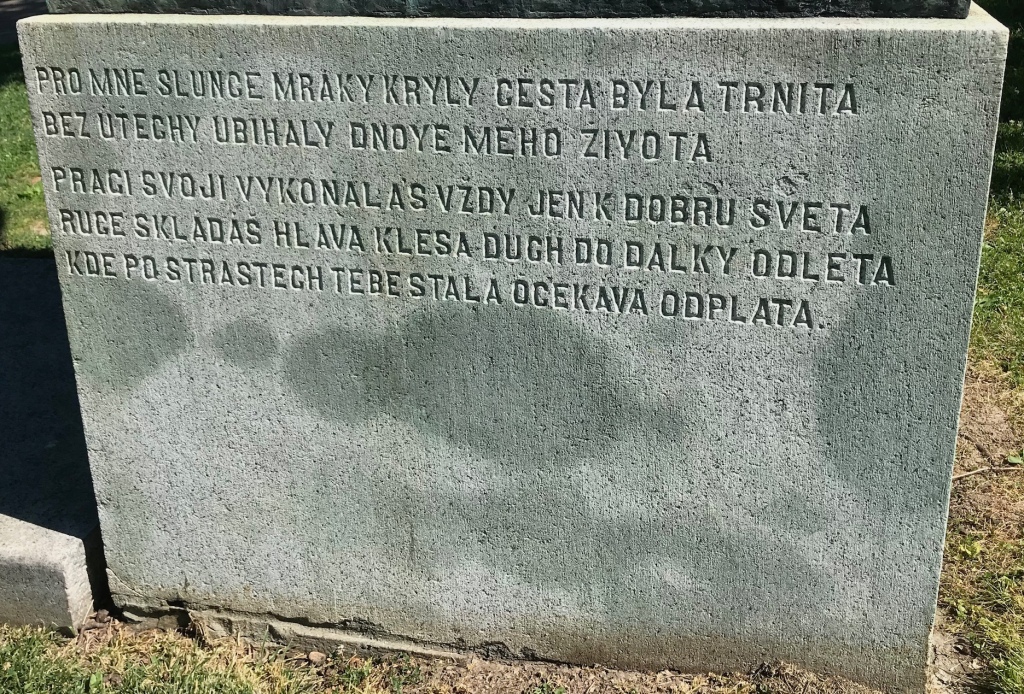
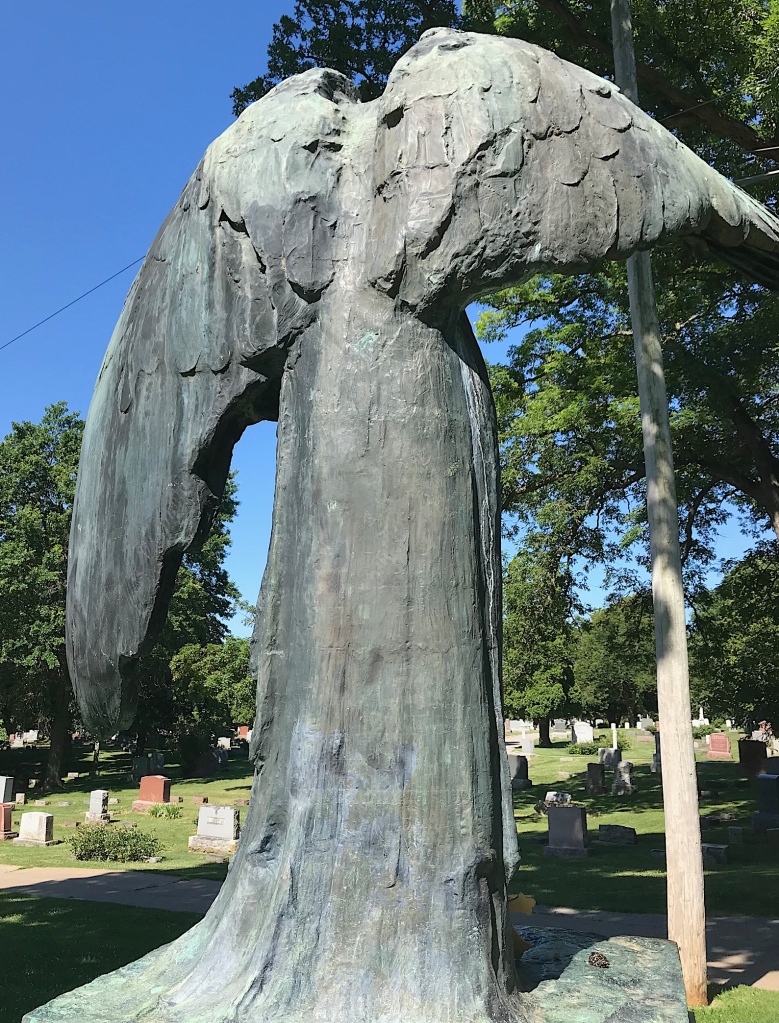


Very interesting I am very surprised that no one has added her name to the stone
Coming up in November of this year, 2024 is the 100 year anniversary of Teresa’s passing. That ought to bring a crowd in the Iowa City’s Oakland Cemetery.
That is an interesting episode,Traci. You’ll definitely will find some Angels at your upcoming visit at Crown Hill Cemetery in Indy.